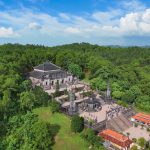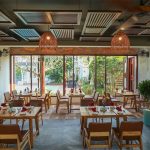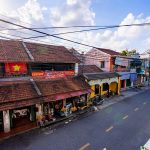Discover the majestic Hue Imperial City, the former royal residence of the Nguyen Dynasty in Vietnam. This UNESCO World Heritage site boasts stunning architecture, intricate decorations, and lush gardens, offering a fascinating journey through Vietnam's imperial past.
List of Contents
- 1. Overview of Hue Imperial City
- 2. Location, Opening Hours, and Ticket Fees
- 3. The Best Time To Visit Hue Imperial City
- 4. Historical of Hue Imperial City
- 5. Architectural Highlights
- 6. Cultural and Historical Significance
- 7. Visitor Information
- 8. Additional Attractions in Hue
- 9. Conclusion about Hue Imperial City
- FAQ
1. Overview of Hue Imperial City
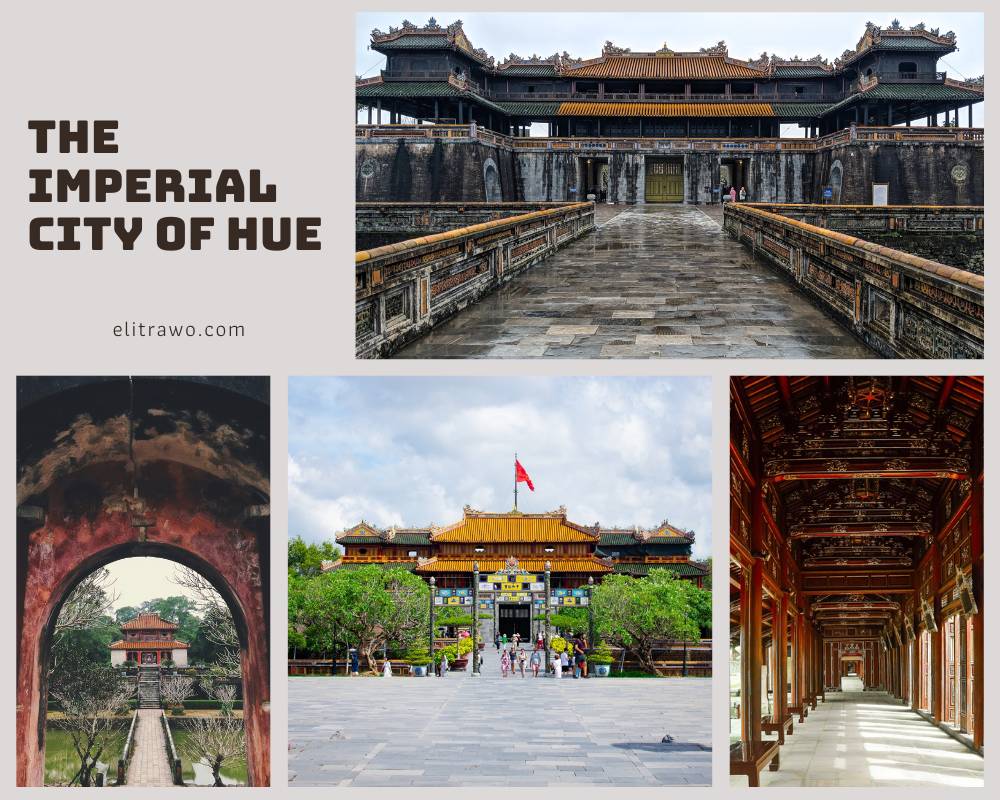
Hue Imperial City is a renowned historical and cultural landmark located in central Vietnam. Recognized as a UNESCO World Heritage Site, this magnificent citadel embodies the rich heritage and architectural brilliance of the Nguyen Dynasty.
Its historical significance and cultural importance make it a must-visit destination for anyone interested in Vietnamese history and culture.
2. Location, Opening Hours, and Ticket Fees
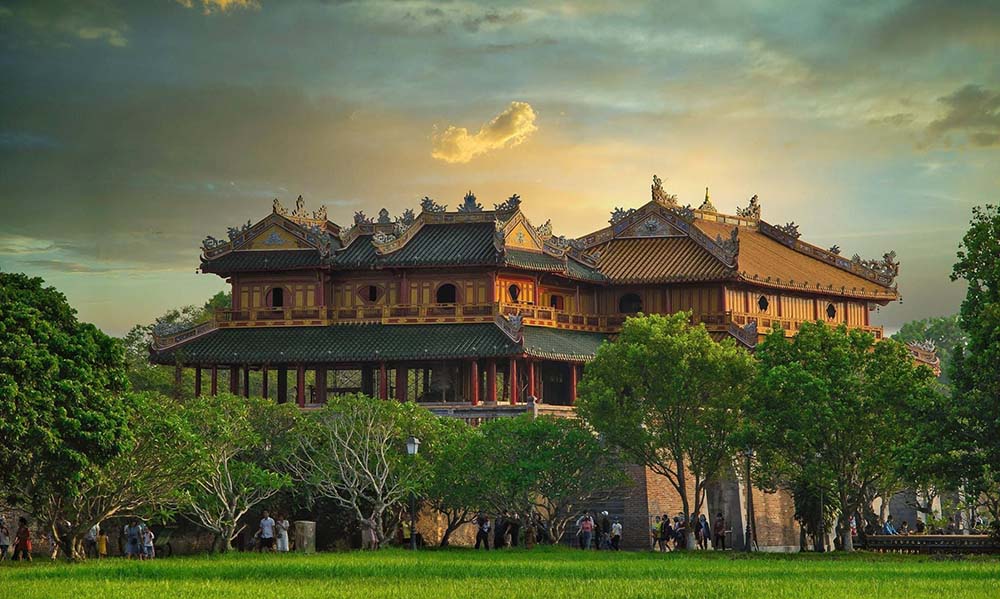
Hue Imperial City is situated on the northern bank of the Perfume River in Hue, Vietnam. This prime location adds to the city's picturesque charm and historical ambiance.
- Imperial City Hue Opening Hours:
- Summer: 6:30 AM – 5:30 PM
- Winter: 7:00 AM – 5:00 PM
- Entrance Fees:
- Adults: 200,000 VND
- Children (aged 7-12): 40,000 VND
- Additional guide services: 150,000 VND per guide
3. The Best Time To Visit Hue Imperial City
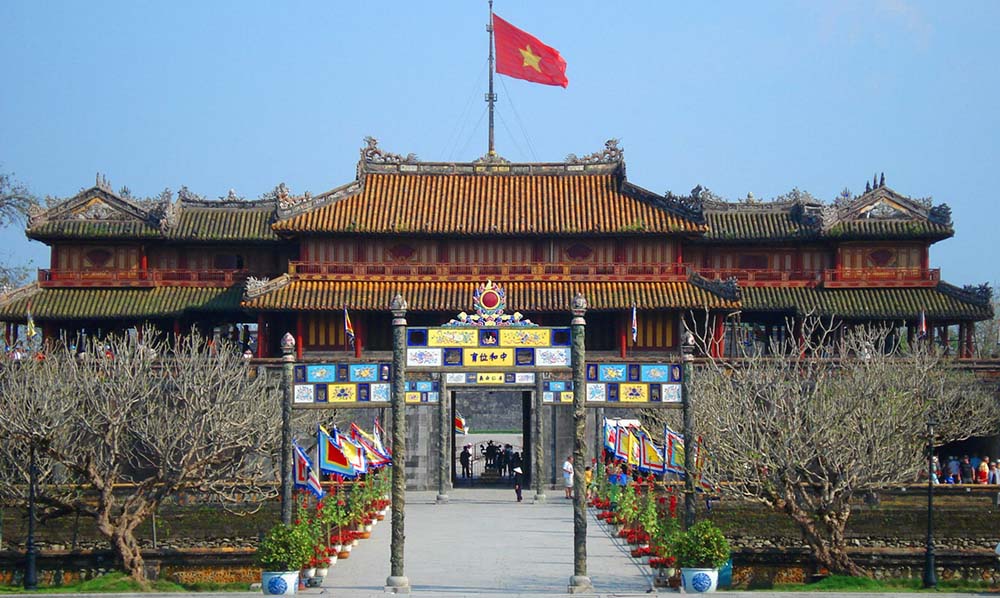
To fully appreciate the grandeur of Hue Imperial City, timing your visit is crucial. The most suitable periods to explore this historic gem are:
- Spring (January to March): Hue's cool weather and poetic scenery make it an ideal time to visit. Blooming trees, vibrant flowers, and the mesmerizing Perfume River create a stunning backdrop.
- Festival Season (April to June): The Hue Festival, Central Vietnam's biggest and most unique celebration, takes place during this time. Visiting the Imperial Citadel allows you to immerse yourself in the festivities and local culture.
4. Historical of Hue Imperial City
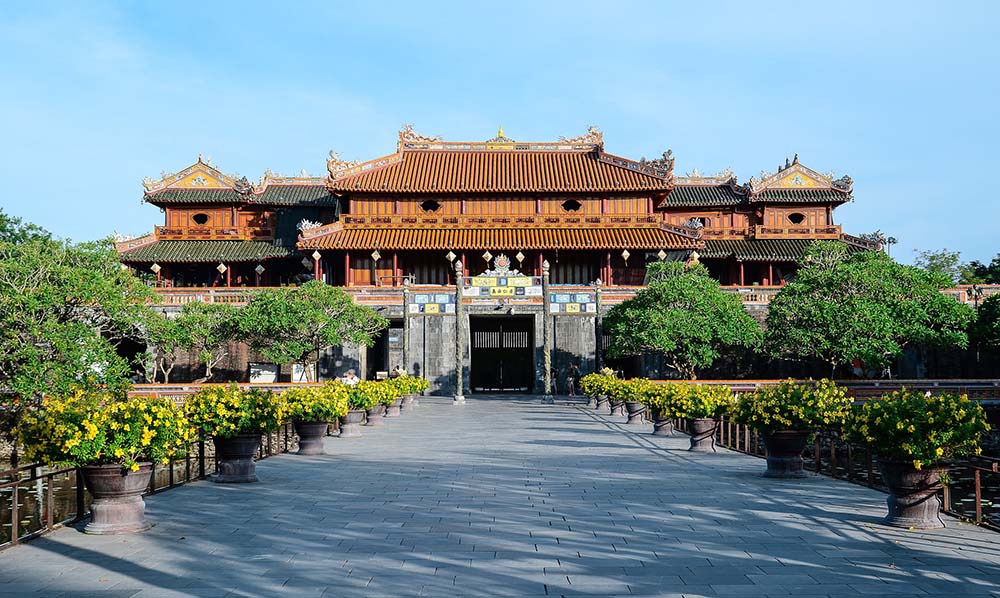
Emperor Gia Long initiated the construction of Hue Imperial City in 1802, marking a new era for the Nguyen Dynasty and establishing Hue as the imperial capital.
Emperor Minh Mang further developed the citadel, fortifying and expanding it into a formidable political and cultural center. The city served this role until 1945, playing a pivotal part in Vietnam's history.
5. Architectural Highlights
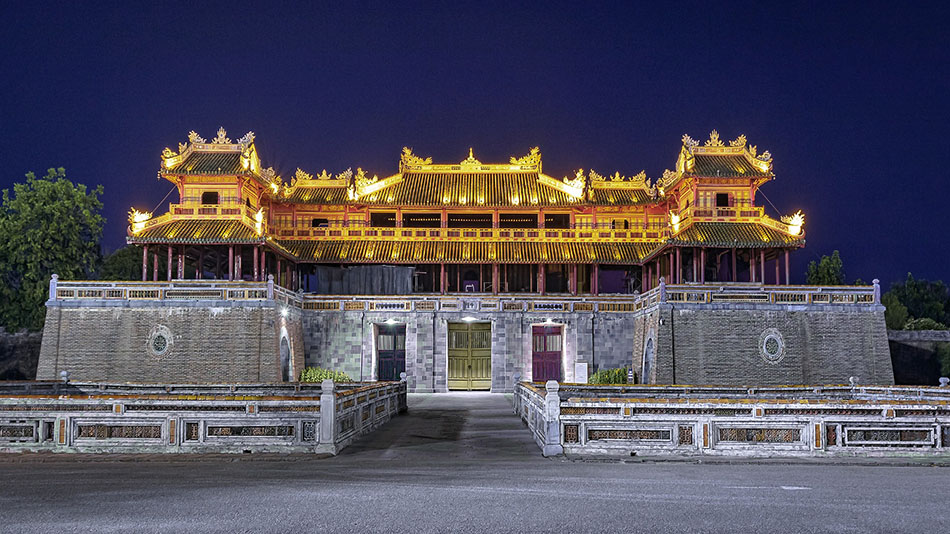
Hue Imperial City is renowned for its unique blend of French military architecture and traditional Eastern elements, making it a fascinating study for architecture enthusiasts.
5.1. Imperial City Structure
The Imperial City's overall structure showcases a harmonious fusion of French fortress design with distinct Eastern architectural features.
The nearly square-shaped citadel has a 10-kilometer perimeter, reflecting both aesthetic elegance and military functionality. The complex is divided into two main sections:
- Imperial City: This section served as the administrative and ceremonial hub, housing significant structures like the Thai Hoa Palace and Can Chanh Palace.
- Forbidden Purple City: This innermost section was the private residence of the emperor and his close family, ensuring utmost security and privacy.
5.2. Main Gates
The Hue Imperial City is fortified with a total of 13 gates, strategically placed to enhance its defensive capabilities. Among these, two gates are accessible by water, highlighting the integration of natural elements into the citadel’s defense strategy.
- Ngo Mon Gate: Serving as the main entrance, this southern gate is a grand architectural masterpiece and a significant symbol of the Imperial City. Its elaborate design and historical importance make it a must-see for visitors.
5.3. Key Structures
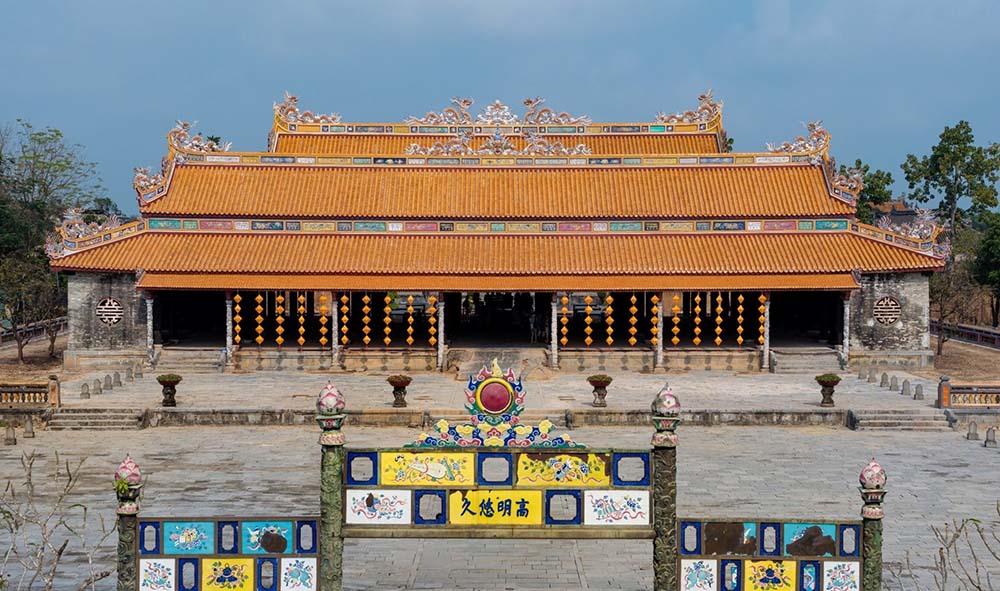
- Ngo Mon Gate: Located at the southern entrance, this gate is the grand entrance to the Imperial City, known for its imposing structure and intricate carvings.
- Thai Hoa Palace: This palace is the venue for important state ceremonies and imperial events, showcasing the grandeur and ceremonial significance of the Nguyen Dynasty.
- Can Chanh Palace: Functioning as the emperor’s working area, this palace was the center of administrative activities within the citadel.
- Forbidden Purple City: Situated at the heart of the Imperial City, this area was the emperor’s private residence, reflecting the utmost in luxury and security.
- Dien Tho Palace: This palace was the residence of the Queen Mother, a significant figure in the royal hierarchy.
- Ky Dai (Flag Tower): A prominent spot for photographs, the Flag Tower is an iconic structure within the citadel, symbolizing the imperial power and pride.
5.4. Royal Tombs
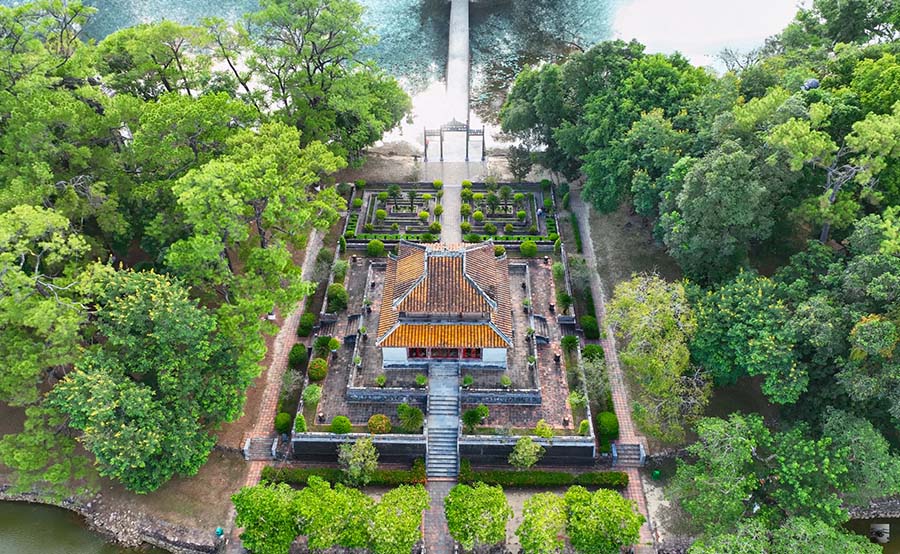
The Hue Imperial City is also renowned for its elaborate royal tombs, which are architectural marvels in their own right. These tombs not only serve as the final resting places for the emperors but also reflect their personalities and the grandeur of their reigns.
- Minh Mang Tomb: Known for its majestic architecture and serene setting, this tomb is a testament to Emperor Minh Mang’s vision and legacy.
- Tu Duc Tomb: Nestled amidst lush gardens and a tranquil lake, this tomb reflects Emperor Tu Duc’s poetic nature and refined taste.
- Khai Dinh Tomb: A blend of traditional Vietnamese and Western architectural styles, this tomb is renowned for its intricate mosaics and elaborate decorations, reflecting the opulence of Emperor Khai Dinh’s reign.
6. Cultural and Historical Significance
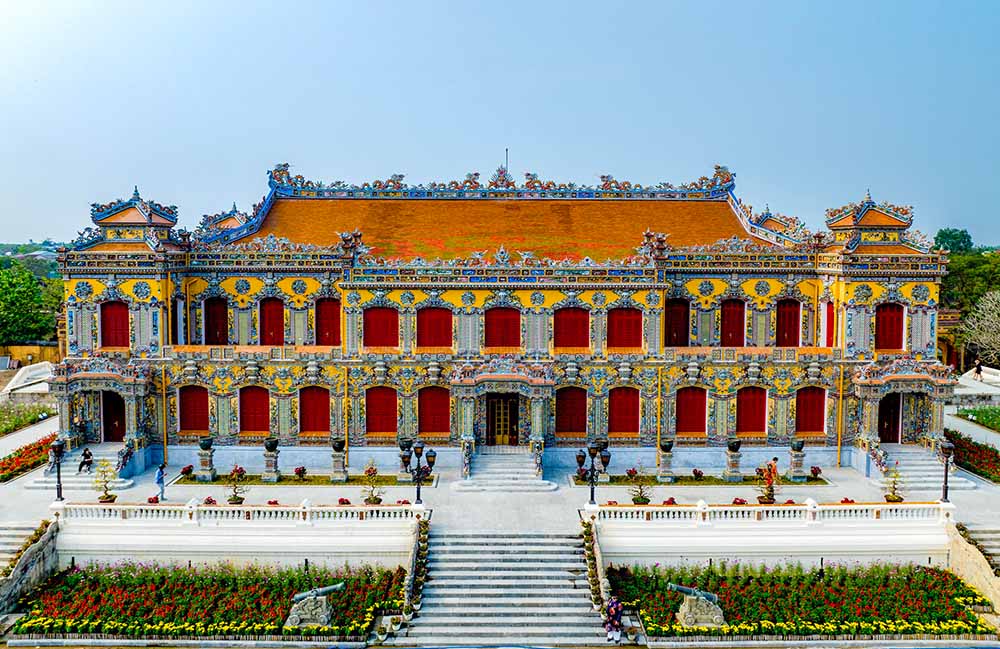
The Hue Imperial City served as a vibrant hub of Vietnamese art, literature, and music during the Nguyen Dynasty, holding immense cultural and historical significance.
6.1. Cultural Hub
The Hue Imperial City was not just a political center but also a cultural nucleus. Art, literature, and music thrived under the patronage of the Nguyen emperors.
The city's architecture reflects a blend of Chinese and French influences, showcasing the diverse cultural interactions during the dynasty's rule.
6.2. Preservation of Traditions
Today, Hue continues to preserve and celebrate its rich traditions. The city hosts numerous traditional festivals and events, providing visitors with a glimpse into its historical past.
One notable cultural heritage preserved here is the Hue Royal Court Music, recognized by UNESCO as an intangible cultural heritage. This music, once performed exclusively for the royal court, remains an integral part of Hue's cultural identity.
7. Visitor Information
7.1. Dress Code
When visiting Hue Imperial City, it is important to dress respectfully. Attire should be modest and appropriate for a site of significant historical and cultural importance.
7.2. Travel Tips
To make the most of your visit to Hue Imperial City, consider these tips:
- Best times to visit Hue Imperial City: The optimal times to explore the city are in the morning or early afternoon when the weather is cooler.
- Optimal visiting months: January-February or April-June are ideal months to visit. The Hue Festival, held biennially, is a fantastic time to experience the city's cultural vibrancy.
- Clothing and hydration: Wear comfortable clothing and shoes suitable for walking. It is also advisable to carry water to stay hydrated during your tour.
7.3. How to get to Hue Imperial City
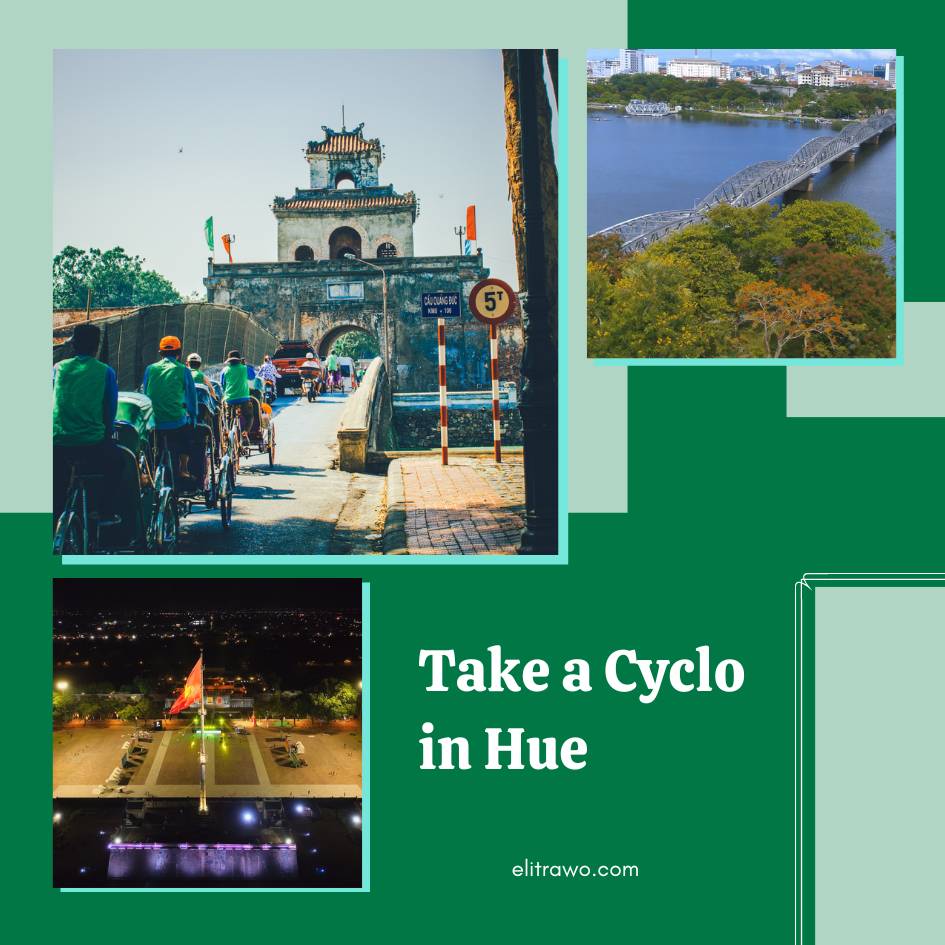
There are several transportation options available for reaching and exploring Hue Imperial City:
- Motorbike: Renting a motorbike provides flexibility and ease of movement.
- Taxi: Taxis are readily available and offer a convenient mode of transport.
- Cyclo tours: For a more leisurely experience, cyclo tours allow you to enjoy the sights at a relaxed pace.
Booking transportation in advance, especially for cyclo tours, can help ensure a smooth and enjoyable visit.
Read more: How to Get Around in Hue
8. Additional Attractions in Hue
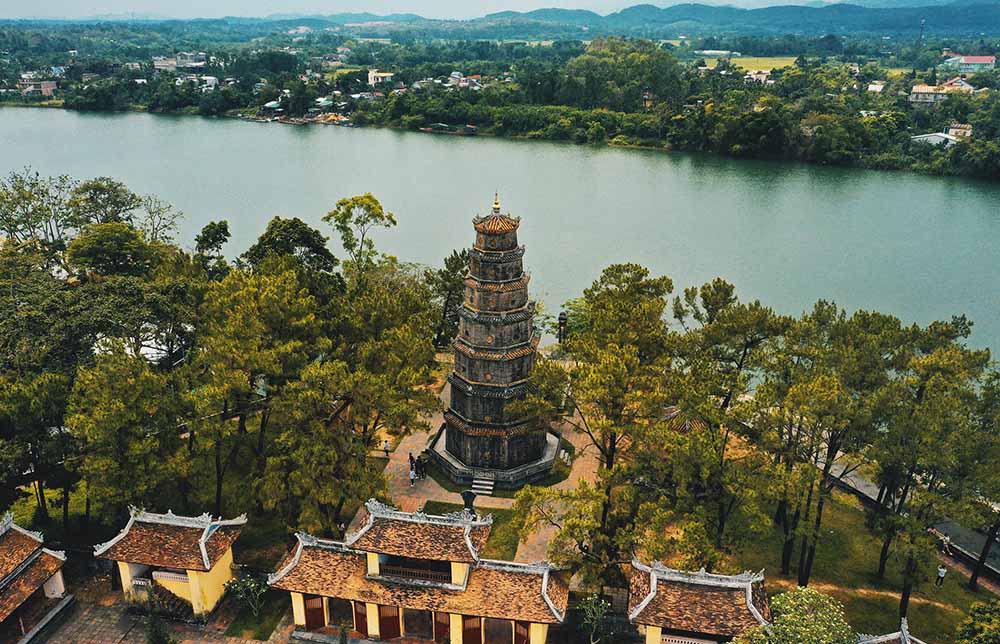
In addition to the marvels of Hue Imperial City, the city of Hue offers several other notable attractions that provide deeper insights into Vietnam's rich history and culture.
8.1. Mausoleum of Emperor Minh Mang
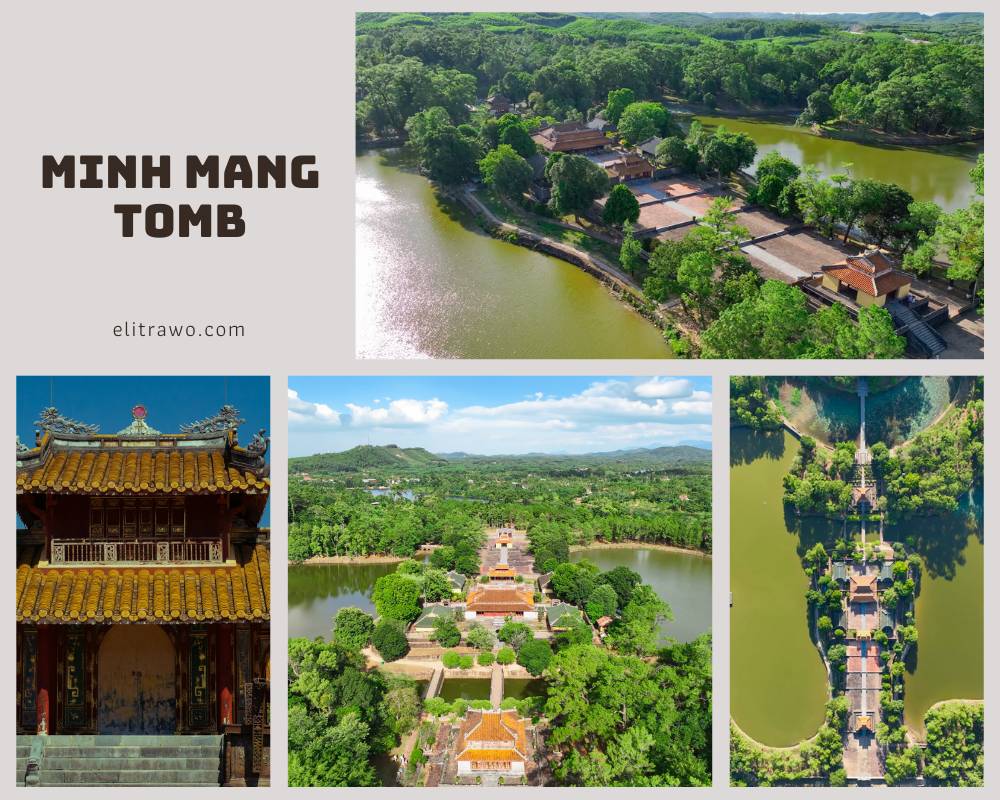
The Mausoleum of Emperor Minh Mang is a stunning example of traditional Vietnamese architecture. Located in a serene setting surrounded by lakes and gardens, this mausoleum reflects the grandeur of the Nguyen Dynasty and the emperor’s vision.
8.2. Tu Duc Tomb
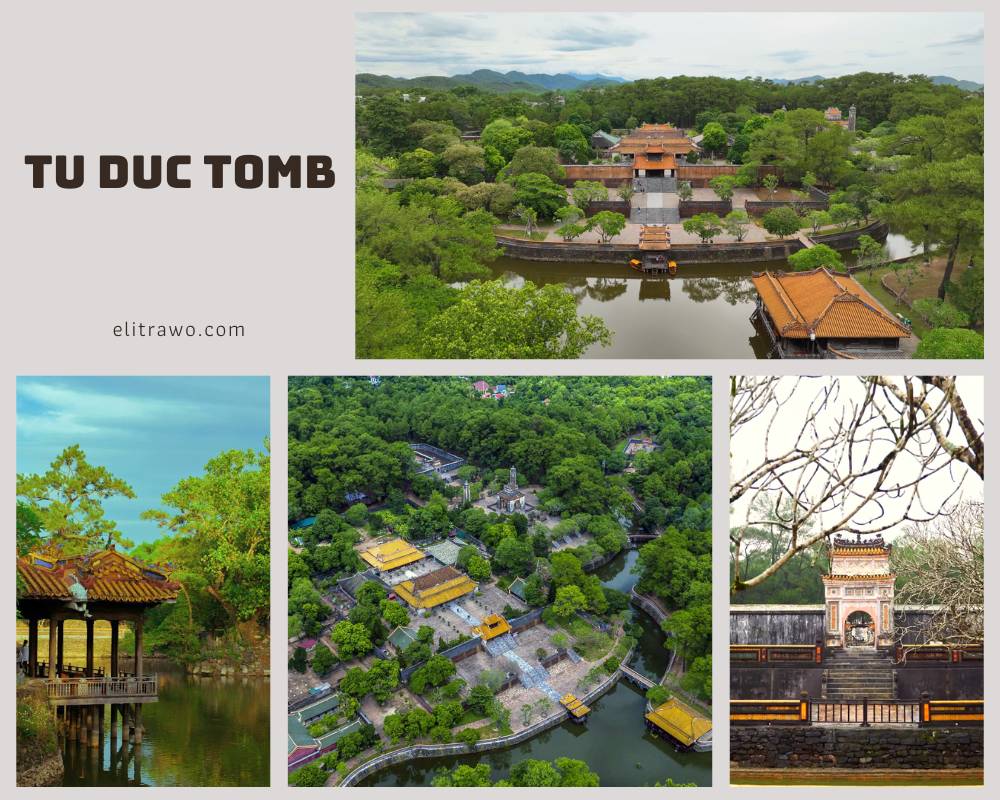
The Tu Duc Tomb is known for its picturesque beauty and intricate design. It served not only as a resting place for Emperor Tu Duc but also as a retreat for him during his reign.
The tomb complex includes pavilions, temples, and a tranquil lake, making it a peaceful escape from the hustle and bustle of the city.
8.3. Khai Dinh Tomb
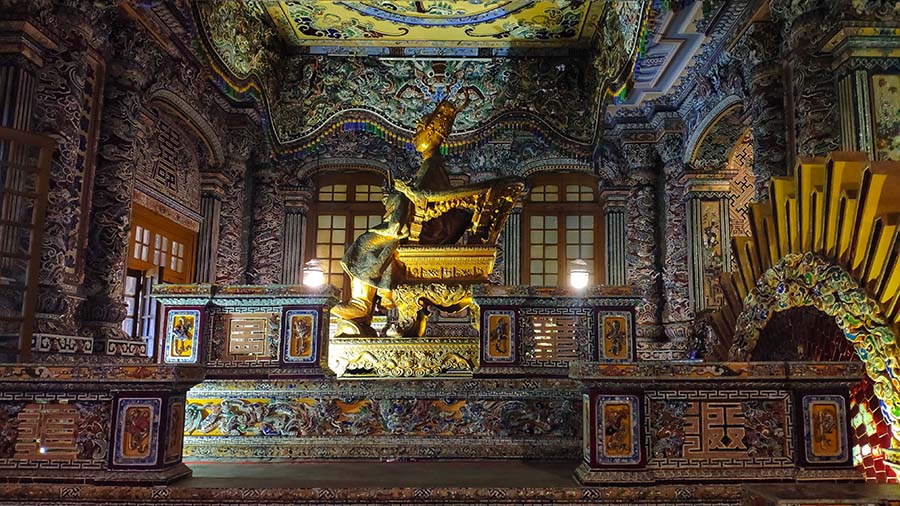
Khai Dinh Tomb stands out for its unique blend of Vietnamese and European architectural styles. This tomb is lavishly decorated with intricate mosaics and elaborate designs, showcasing the emperor’s penchant for opulence.
8.4. Thien Mu Pagoda
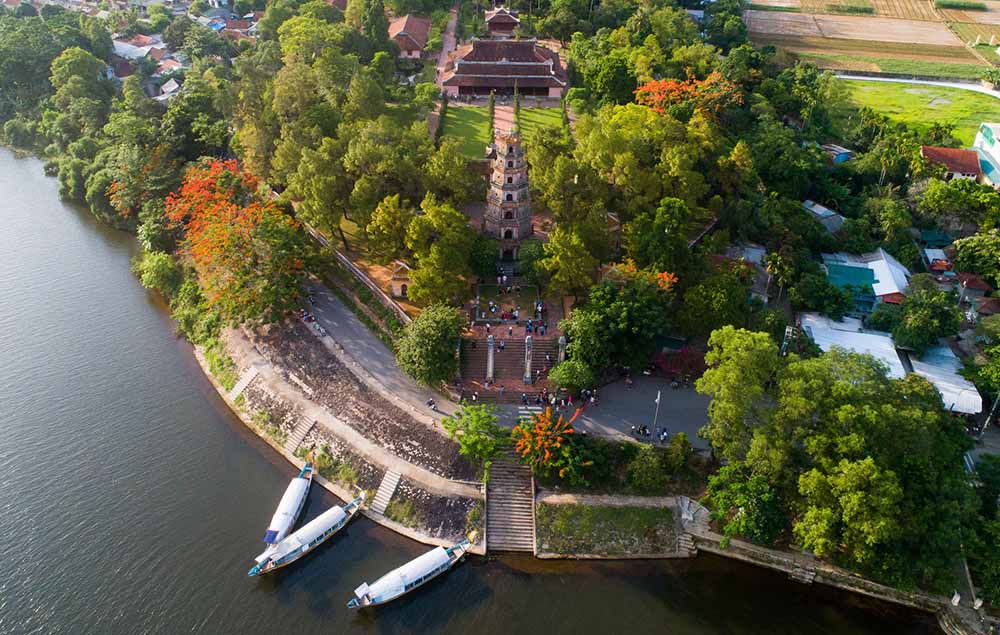
Thien Mu Pagoda is one of the oldest and most significant religious sites in Hue. Overlooking the Perfume River, this seven-story pagoda is a symbol of the city and offers stunning views and a peaceful atmosphere for visitors.
8.5. Dong Ba Market
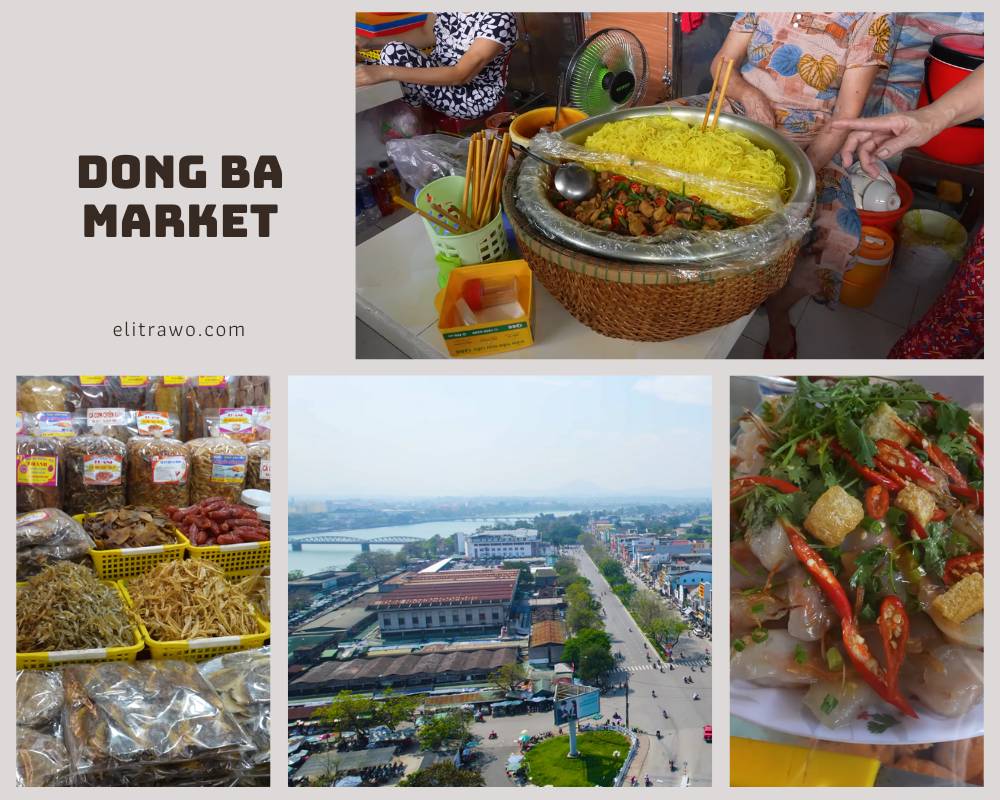
For those interested in local culture and cuisine, Dong Ba Market is a must-visit. This bustling market is the perfect place to experience the everyday life of Hue’s residents and to sample a wide variety of traditional Vietnamese foods.
8.6. Perfume River and Trang Tien Bridge
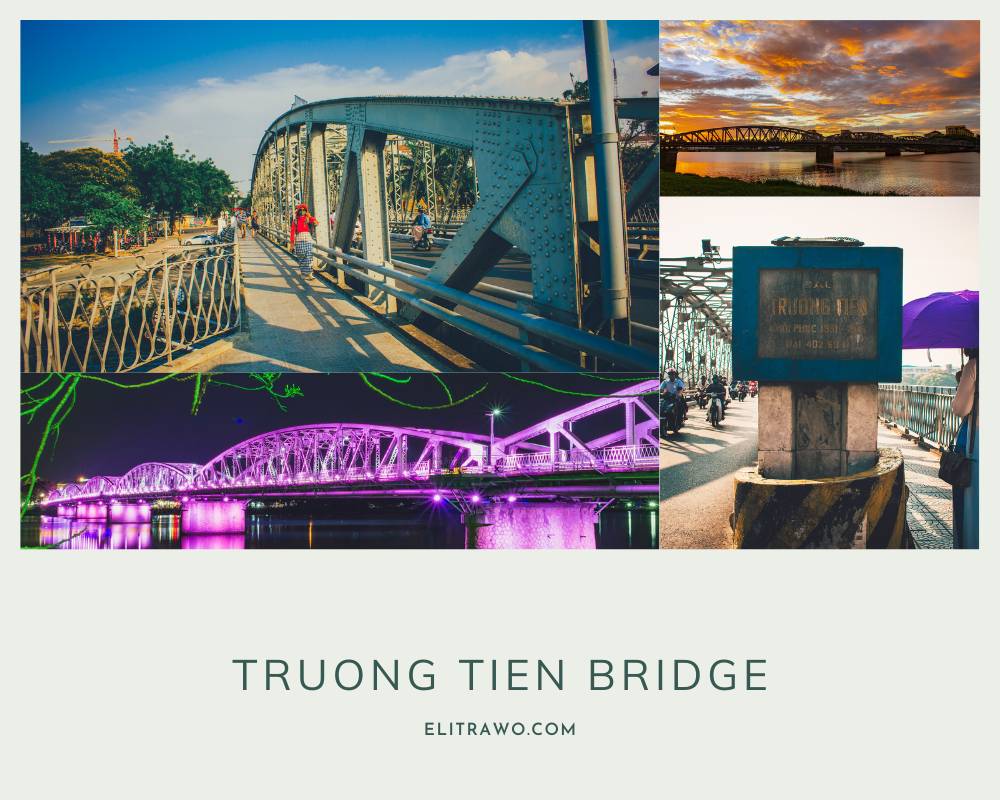
The Perfume River and Trang Tien Bridge are iconic landmarks in Hue. A boat ride on the Perfume River provides a scenic view of the city’s historical sites and natural beauty, while the Trang Tien Bridge, especially when illuminated at night, adds a touch of charm to the cityscape.
9. Conclusion about Hue Imperial City
Hue Imperial City and its surrounding attractions offer a rich tapestry of history, culture, and architectural beauty.
From the grandeur of the imperial citadel to the serene beauty of the royal tombs and pagodas, Hue provides a unique and immersive experience for all visitors. Whether you are a history buff, a cultural enthusiast, or simply a traveler looking to explore Vietnam, Hue is a destination that promises to leave you with lasting memories.
Exploring the Hue Imperial City is just the beginning of your adventure in this historic destination. For a complete overview, check out our Hue Travel Guide. It offers essential tips and insights for an unforgettable visit.
Also, discover the best Things to Do in Hue, featuring top attractions and unique experiences that showcase the city's charm and heritage.
FAQ
Is the imperial city Hue worth it?
Yes, visiting Hue Imperial City is definitely worth it for travelers interested in history, culture, and architecture. As a UNESCO World Heritage Site, Hue Imperial City offers a captivating glimpse into Vietnam's imperial past and the grandeur of the Nguyen Dynasty.
What is Hue Imperial City famous for?
Established as the capital of unified Vietnam in 1802 CE, Hue was not only the political but also the cultural and religious centre under the Nguyen Dynasty, the last royal dynasty of Vietnamese history, from 1802 to 1945 CE.
Is Imperial City Hue free?
Hue Imperial Citadel entrance fee is the same for both foreign tourists and Vietnamese citizens as follows: Adults: 200,000 VND. Children (aged 7 to 12): 40,000 VND.
How to enter Hue Imperial City?
The Hue Imperial City is on the northern side of the Perfume River, across from the central part of the city. You enter through the Meridian Gate, which is off Le Duan street.

